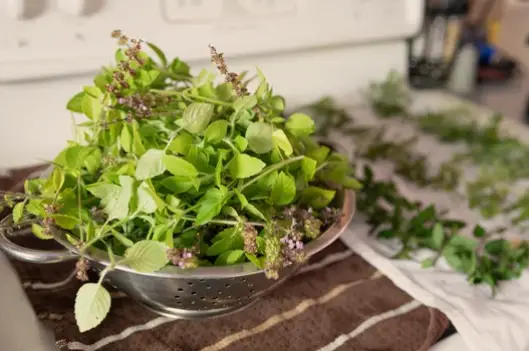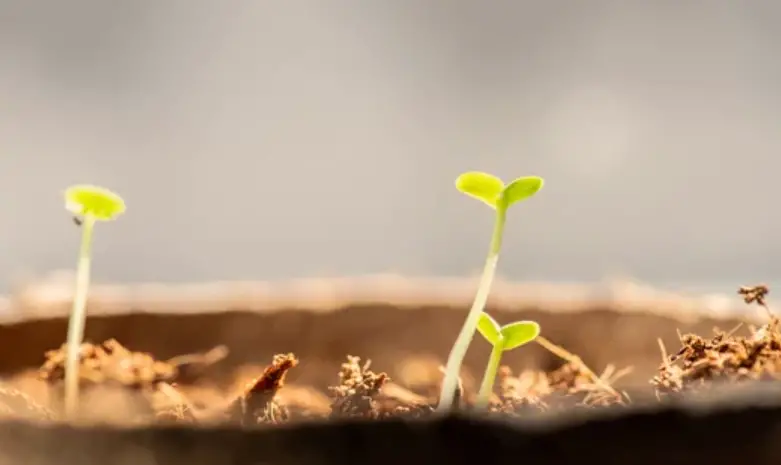Basil, with its delightful aroma and distinctive flavor, is a popular herb used in a variety of culinary dishes.
Whether you’re an experienced gardener or a beginner looking to try your hand at cultivating your herbs, basil is an excellent choice due to its versatility and ease of cultivation.
However, to ensure a successful basil harvest, it’s crucial to understand when and how to start basil seeds.
Here are the best times to start basil seeds, the different methods available, and tips for optimal growth.
The Right Timing For Basil Seed

Start Basil Seeds
The timing of when to start basil seeds can significantly impact your success as a basil gardener.
Basil is a warm-weather herb, and it thrives in temperatures between 70 and 95 degrees Fahrenheit (21-35°C).
Therefore, the ideal time to start basil seeds depends on your location and local climate.
Indoor Start:
If you live in an area with a short growing season or frequently experience late spring frosts, starting basil seeds indoors is a viable option.
You can begin the indoor seeding process 6-8 weeks before the last expected frost date in your region.
This early start indoors allows you to transplant healthy seedlings into your garden or outdoor containers once the weather is consistently warm.
Direct Outdoor Sowing:
In regions with mild winters or where frost is rare, you can sow basil seeds directly into your garden or containers.
Aim to sow the seeds when the soil temperature reaches at least 50 degrees Fahrenheit (10°C). For many, this falls within the early to mid-spring timeframe.
Soil Preparation
Basil thrives in well-draining soil with a slightly acidic to neutral pH level (around 6.0 to 7.0).
To prepare your soil for basil planting, you can amend it with compost to improve drainage and fertility.
Loamy soil is often ideal for basil, providing a balanced texture for roots to develop.
Seed Planting

Indoor Seeding:
If you opt for indoor seeding, use seedling trays or small pots with good-quality seed-starting mix.
Plant basil seeds 1/4 inch deep and cover them lightly with soil.
Keep the soil consistently moist but not waterlogged, and place the containers in a warm, sunny location, or under grow lights.
Direct Outdoor Sowing:
When sowing basil seeds directly outdoors, ensure that the soil is warm and workable.
Sow seeds about 1/4 inch deep and space them around 6 to 12 inches apart, depending on the basil variety.
Water the area gently after sowing to settle the soil around the seeds.
Germination and Care

Basil seeds typically germinate within 5-10 days if the temperature and moisture conditions are optimal.
Once the seedlings have emerged, it’s essential to provide proper care to ensure their healthy growth.
Indoor Seedlings:
Thin out the weaker seedlings to leave the strongest ones with enough space to develop.
As the seedlings grow, you may need to transplant them into larger pots or containers if they become crowded.
Outdoor Seedlings:
For outdoor-sown basil, thin out the weaker seedlings as well to achieve the desired spacing.
Continue to water the basil plants regularly and provide them with full sun exposure, at least 6-8 hours of sunlight per day.
Companion Planting
Basil is not only a culinary delight but also a valuable addition to your garden due to its pest-repelling properties.
Planting basil near other garden crops can help deter insects like aphids, whiteflies, and tomato hornworms.
Some companion plants for basil include tomatoes, peppers, and oregano.
Basil can also enhance the flavor of certain neighboring vegetables like tomatoes, making it a useful companion in the kitchen garden.
Pruning and Maintenance
Regular maintenance and pruning are essential for healthy basil plants.
When basil reaches about 6 inches in height, pinch or cut off the top few inches to encourage lateral branching and bushier growth.
Continual harvesting will prevent the plant from flowering too early, a process known as bolting, which can cause the leaves to become bitter and reduce overall productivity.
Maintaining a good airflow around the plants also helps to prevent diseases and mildew.
Overwintering Basil
As the growing season ends and colder temperatures set in, you can prolong your basil’s life by overwintering it.
This involves bringing the plant indoors and providing it with the right conditions to survive through the winter.
Keep your potted basil in a sunny spot, water sparingly, and protect it from drafts.
With proper care, you can enjoy fresh basil even during the winter months.
Harvesting

Basil can be harvested once it has grown a few sets of true leaves.
Pinch off the leaves just above a leaf node to encourage bushier growth.
Be mindful not to remove more than one-third of the plant at a time, as this can stress the basil.
Recommendations
You may enjoy fresh, fragrant herbs right from your garden or windowsill by successfully growing basil from seeds.
It’s important to know when to start basil seeds, and this mostly depends on the local climate and weather.
Following the right time and care instructions will result in a plentiful basil harvest, regardless of whether you decide to start indoors or sow directly in your garden.
Thus, don your gardening gloves, roll up your sleeves, and savor the delight of growing your own basil. Enjoy your garden!




